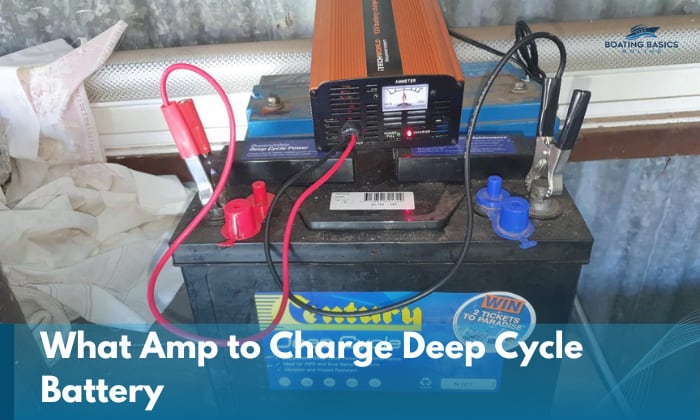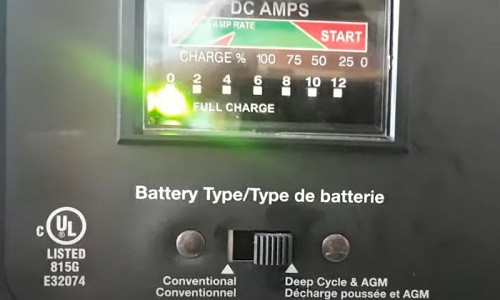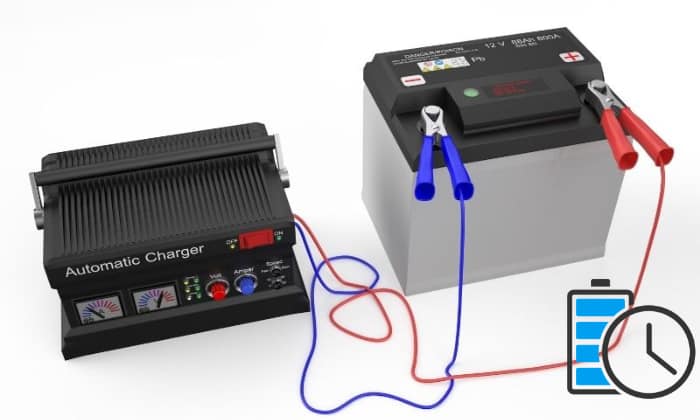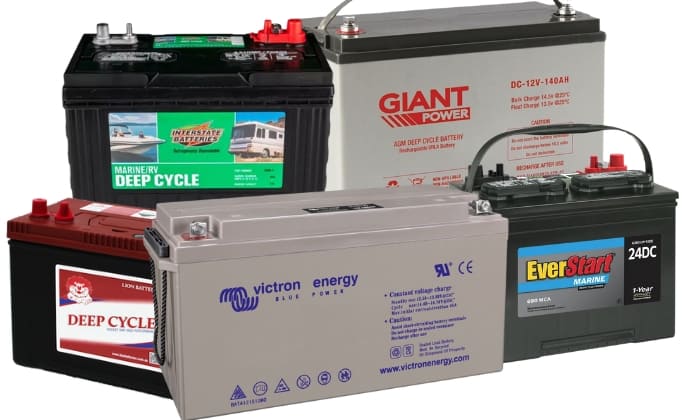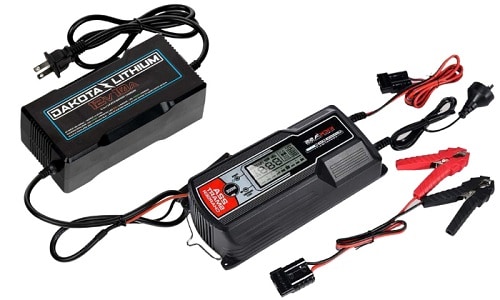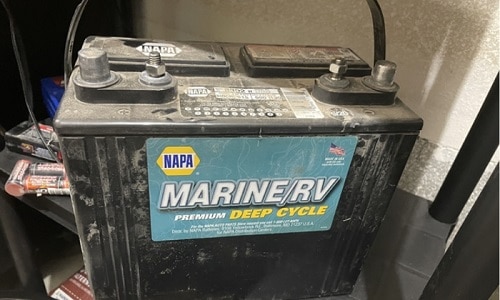It’s great that you’re asking, “What amp to charge deep cycle battery?” and expanding your boating/electrical knowledge. It’s easy to overcharge these items, which is the surest way to a lowered lifespan.
Whenever you recharge a deep cycle battery, always look at the charger’s instructions first. The specifications should indicate the maximum amps.
Choose any charge rate equal to or less than the maximum limit (usually 2 to 15 amps per hour). Slower rates are fine, as I’ll explain below.
Table of Contents
Optimal Charging Amperage for Deep Cycle Batteries
What do we boaters want whenever we charge our deep-cycle batteries? Is it so that we can immediately use them for powering our boats when the need arises? Or do we just want to make the most out of the battery over the years?
These questions ultimately determine the optimal charging rates we should choose whenever we power these batteries. If you want the most optimal rate that allows you to use your unit as soon as possible, I suggest you just follow the 25% rule.
It simply means you can charge up to ¼ of the battery’s amp-hour rating. Let’s say you have a 100 Ah deep cycle battery. You can get the maximum safe charge rate by using the formula:
That gives us the ceiling rate, but you also need to figure out the correct voltage (likely 14.58V, but just refer to the instruction manual to be safe). If the battery is completely discharged, it should take 5 hours to become full.
On the other hand, I know more than a few boaters who firmly believe that trickle charges of 2 amps or less lead to longer-lasting batteries – and that’s completely fine.
The advice to keep the charging rate below the battery’s maximum amps is considered universally safe for all batteries, deep-cycle included. Low charging rates often mean low heat (arguably every battery’s worst enemy). This, in turn, leads to a longer battery life.
Still, plenty of boaters make adjustments based on the battery’s amp-hour rating and how discharged it is currently. This is so they don’t have to wait for a long time and still ensure that they’re safely powering their units. For example:
- You have a 100 Ah battery that’s only slightly discharged. In that case, rates of 5 to 10 amps per hour will suffice during the bulk stage.
- The same rate can arguably be used for a 50 Ah deep cycle battery that’s around 80% discharged. Although, if it’s only mildly discharged, then you can settle for 2 to 5 amps per hour instead.
See how those rates are still relatively low? If you’re a boater that has the patience of a saint, you really wouldn’t have any qualms about these recommendations.
Recommended Charging Amperage Range
Thus, the answer to “What amp to charge marine battery?” will always be to keep it as low as possible, but not so much that it begins to affect your boating activities. If you have the time to wait, then, by all means, be a trickle charge purist.
For most, the ideal range is between 5 to 15 amps per hour. However, I can’t blame people who stick to their 2 amp per hour belief to the grave because it’s undeniably backed up by science and industry guidelines.
Overall, this really won’t be much of an issue for the boater who knows how to use an automatic deep cycle marine battery charger. They’re usually rated for 10 amps and are smart enough to make adjustments to the charging rate over time.
For example, with a completely discharged AGM battery, my charger starts at 10A, then reduces the rate to 8A, and, finally, lowers it to 2A as it nears a full 100% state. Afterward, it just stops to prevent overcharging.
Considerations for Different Battery Capacities and Types
Remember to make adjustments based on these elements:
- Capacities mainly determine the rate of charge. Smaller capacities shouldn’t be charged too quickly as they may overheat, while their larger counterparts can be charged faster, so you won’t have to wait for a long time just to depart.
- Some argue that lithium deep-cycle batteries aren’t as susceptible to overcharging and undercharging as their lead-acid and AGM However, it’s still recommended to practice safe battery charging regardless of type.
Factors Affecting Charging Amp
We also can’t deny how the following affect charging amps:
1. Charger Specifications
You’ll only be taking a needless risk if you decide to use a charger with a far higher rating than the battery you’re using. So, be sure to always look at the exact specifications (amps, in particular) of the electronics you have.
Why use a charger with battery charging amps of 100 amps per hour on a 35 Ah lead acid battery if it’s a sure way to destroy it or, worse, cause a fire? You can start with the minimum current level to be safe, which is 10% of the battery’s Ah.
2. Battery Age
Batteries age and, in turn, will have lower capacities and higher internal resistance (both detrimental to their power delivery).
This means they’ll likely charge and discharge much quicker than when they were new, so you may need to adjust the amount of time you leave them plugged in and the charging rate.
How to Choose the Right Charging Amperage for Your Battery
Keep these things in mind when pairing your deep-cycle marine battery with the correct charging amps.
- Determine the Battery Type – Lithium-ion batteries should be charged by a lithium-ion battery charger. Lead-acid ones should be charged with their own specific chargers, and so on.
- Use the Correct Amps and Voltage – The charger’s amps and voltage specifications should match with the battery’s. Most deep-cycle batteries are 12V, so the charger should also be 12V.
As for the battery’s amp hour rating, as we’ve discussed above, just make sure the charger’s amperage isn’t higher than that.
Conclusion
With all the facts above considered, I can safely say the answer to “What amp to charge deep cycle battery?” is that you shouldn’t charge at a rate that’s higher than a fourth of the battery’s amp-hour rating.
A lower rate will do and is even recommended by a lot of folks, but if you want to make better use of your time, then make the safe adjustments as explained in this post. Lastly, you can always spare yourself from needless calculations by using automatic chargers.

“My intention from the first day establishing Boating Basics Online is to provide as much help as possible for boaters who want to experience a first safe and convenient trip. So feel free to join us and share your beautiful journeys to the sea!”

